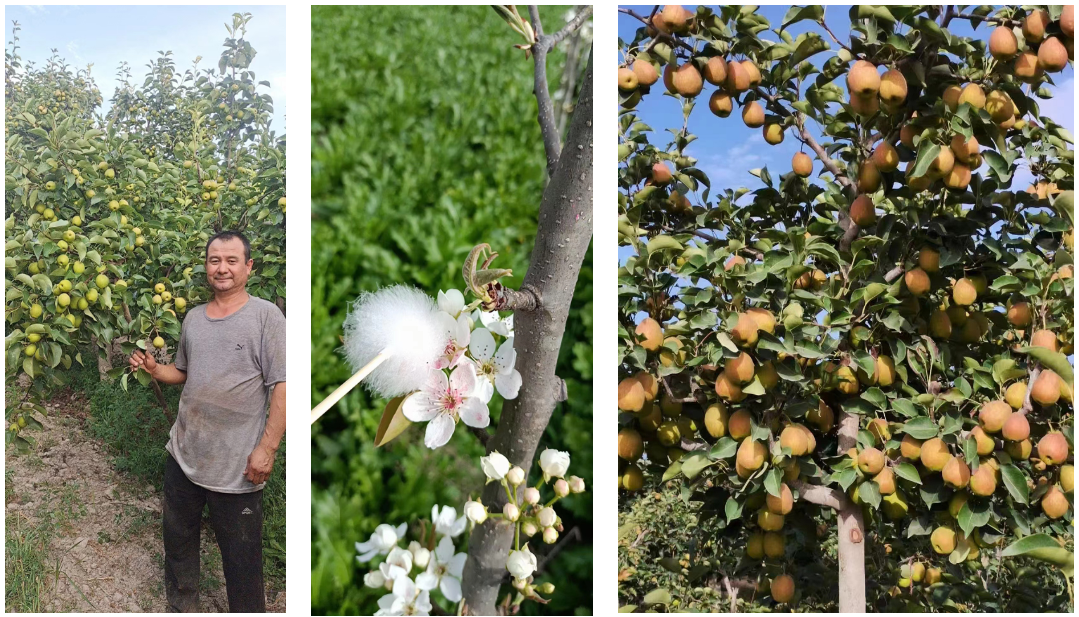Dec . 04, 2024 16:38 Back to list
famous effect of pollination on pear trees
The Famous Effect of Pollination on Pear Trees
Pollination is a critical process in the reproductive cycle of flowering plants, and its significance becomes particularly evident when we examine its impact on fruit-bearing trees, such as pear trees. The interaction between pollinators and flowering plants is not just a fascinating dance of nature; it is a foundational element of agricultural productivity and ecological balance. This article explores the famous effect of pollination on pear trees, highlighting its mechanisms, ecological implications, and the benefits it brings to both the trees and the surrounding environment.
Understanding Pollination in Pear Trees
Pollination occurs when pollen grains from the male anthers of a flower are transferred to the female stigma, leading to fertilization and fruit development. In the case of pear trees (Pyrus communis), they are often self-incompatible, meaning that pollen from one tree cannot fertilize its own flowers. Instead, cross-pollination between different varieties is necessary for fruit production. This requirement leads to a symbiotic relationship with various pollinators, primarily bees, but also including butterflies, birds, and even wind in some cases.
The pear tree blooms in the spring, producing fragrant white or pink flowers that attract a myriad of pollinators. The timing of flower production is crucial; it must coincide with the active periods of these pollinators to ensure effective pollen transfer. A successful pollination event can lead to the formation of fruit, which is essential not only for the propagation of the species but also for the agricultural economy reliant on pear production.
The Benefits of Pollination
The benefits of effective pollination extend beyond mere fruit production. For pear trees, proper pollination leads to increased yield, improved fruit quality, and enhanced genetic diversity. Quality factors such as size, sweetness, and texture of pears are significantly influenced by how well a flower is pollinated. Consequently, higher rates of pollination can result in a greater marketable product, benefitting farmers and consumers alike.
Additionally, pollination fosters genetic diversity among pear populations. When cross-pollination occurs, it promotes the mixing of genetic material, resulting in new hybrid varieties that may be more resilient to diseases and environmental stresses. This genetic breadth contributes to the long-term sustainability of pear cultivation, aligning economic interests with ecological health.
famous effect of pollination on pear trees

Ecological Implications
Pollination has profound ecological implications beyond the individual fruit trees. The presence of pollinators like bees is indicative of a healthy ecosystem; their activity often correlates with the overall health of the surrounding flora and fauna. As pear trees bloom, they provide an essential food source for pollinators, thereby supporting their populations. In return, these pollinators facilitate the continued growth of pears, establishing a mutually beneficial relationship that enhances local biodiversity.
Moreover, pear orchards often serve as critical habitats for a variety of wildlife. Birds, insects, and other organisms rely on the niches created by these trees. By promoting pollinator populations, pear trees indirectly support a broader array of species and contribute to ecosystem stability. This interplay illustrates the interconnectedness of life forms within agricultural landscapes.
The Challenges of Pollinator Decline
Despite the essential role of pollination in pear cultivation, pollinator populations have been declining globally due to factors like habitat loss, pesticide use, and climate change. This decline poses a significant risk not only to pear trees but to numerous other crops that depend on these creatures for reproductive success. Farmers and researchers are increasingly focusing on strategies to enhance pollinator habitats—such as planting wildflowers and reducing chemical inputs—to mitigate these risks.
Educating the public about the importance of bees and other pollinators plays a crucial role in promoting conservation efforts. By raising awareness, communities can engage in practices that protect these vital organisms.
Conclusion
The famous effect of pollination on pear trees is multifaceted, influencing everything from fruit production to ecosystem health. Understanding this intricate relationship is vital for the sustainability of agriculture and the preservation of biodiversity. As we continue to explore and enhance our agricultural practices, recognizing and valuing the role of pollinators becomes increasingly important. By fostering environments that support both pear trees and their pollinators, we can ensure a flourishing future for both crops and ecosystems alike. Through thoughtful stewardship, we can preserve the delicate balance that sustains our natural world.
-
AI-Powered Plant Pollen Analysis Using GPT-4 Turbo
NewsAug.03,2025
-
Plant Pollen Analysis: Fast & Accurate with GPT-4 Turbo
NewsAug.02,2025
-
KiwiPollen with GPT-4 Turbo: AI Health Supplement Boost
NewsAug.01,2025
-
Pollen Peach Tree AI Management with GPT-4-Turbo
NewsJul.31,2025
-
Eco Fruit Paper Bags for Peak Freshness | Durability Focused
NewsJul.31,2025
-
Pollen Peach Tree for Pure Pollination and High-Quality Peach Pollen
NewsJul.30,2025